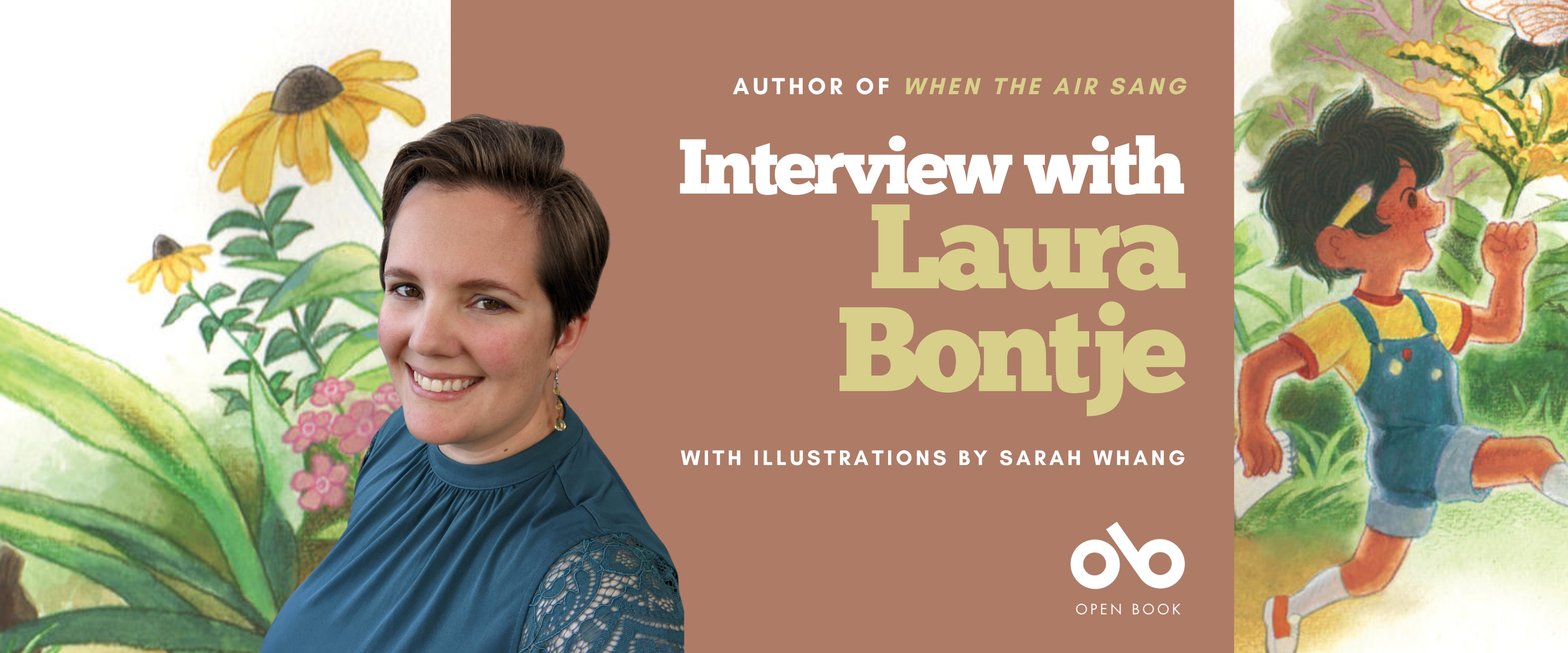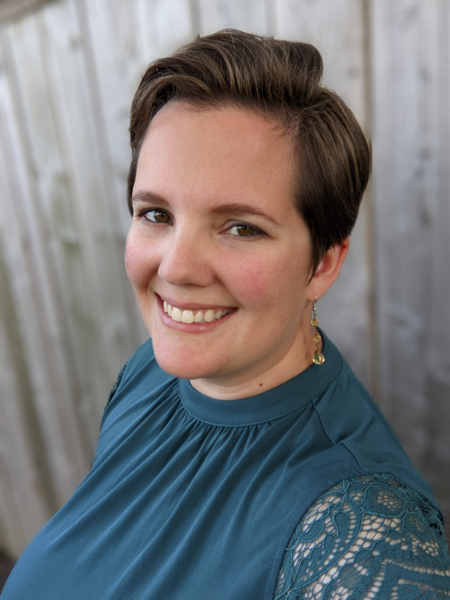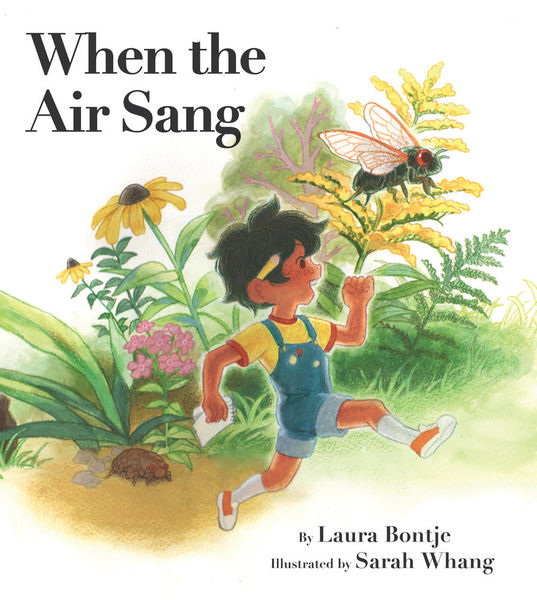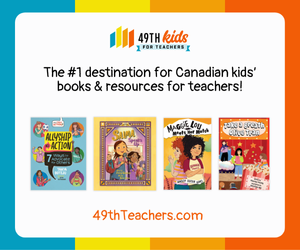A Budding Cicada Enthusiast Learns That Some Wondrous Natural Events Are Worth Waiting For in When the Air Sang
It's always special to see authors speak to young readers about the wonders of the natural world, and our featured book today does exactly that. Further, Laura Bontje's latest work digs down to a micro-level with a focus on some of the smaller creatures that play a crucial role in a thriving ecosystem.
In When the Air Sang (Annick Press), we follow a budding entomologist in Annie, who has been waiting day after day for cicadas to appear and start singing their songs. But, as they keep dropping hints about their arrival without showing up in earnest, Annie's anticipation is almost too much for her to bear.
Luckily, she is joined by generations of women in her family; first her grandmother, and then her mother. And they share their own stories about these insects and what they have meant in their lives. When the magical day comes, and the cicadas start singing, Annie realizes that the wait was well worth it, and that some things reward patience with true beauty.
It's a gorgeous book with stirring words and stunning art from debut illustrator Sarah Whang, all of which takes young readers on a journey of discovery into all of the fascinating aspects of nature that lay right in their own backyards.
We're very happy to share this Kid's Club BFYP interview with the author, right here on Open Book!
Open Book:
Tell us about your new book and how it came to be.
Laura Bontje:
When the Air Sang (illustrated by Sarah Whang) is the story of Annie, an insect-loving kid who has just discovered that 17-year cicadas are about to emerge in her backyard. When she has trouble waiting, her mom, grandma, and great-grandma share their memories of previous cicada emergences.
In summer 2020, my child discovered a newly molted cicada drying its wings on its husk, and I was awed. There were always crispy brown husks clinging to the bricks of our house, but I’d never seen an adult cicada before! They weren’t common where I grew up, and I had no idea they looked different once they molted.
Immediately, I sensed the possibility of a book.
Your CanLit News
Subscribe to Open Book’s newsletter to get local book events, literary content, writing tips, and more in your inbox
It took months to figure out what my “hook” would be. The fact that the insects had been growing since before the protagonist was born led me to the intergenerational aspect.
In the lockdowns and waves of restrictions in 2020 and 2021, I was also missing my own parents and grandparents. That yearning for faraway family played a large part in the comfort I derived from creating Annie’s close-knit family.
OB:
Did the book look the same in the end as your originally envisioned it when you started working, or did it change through the writing process?
LB:
The general idea stayed the same. Tracking the cicadas’ emergence step by step, having a repeated refrain that could tie the generations of women together—those were always there in some form.
But over the course of more than 25 drafts and the feedback of my critique partners, the text evolved a lot.
Once the book was acquired by Annick Press, my wonderful editor, Jieun Lee, encouraged me to dig deeper into Annie’s motivations and shift the voice to one that may resonate more with a child. I’ve tried to take that guidance with me into every manuscript I’ve written since. And my dear friend Beth proposed the connection that tied Annie’s story to the cicadas’ journey: I can’t even imagine the book without Annie’s sister!
Another change came from Dr. Gene Kritsky, an entomologist who so generously fact-checked the manuscript and helped me better understand these incredible insects. Originally, there was a scene where Annie awoke in the morning to see the ground rippling with cicada nymphs. Thanks to Dr. Kritsky, I now know that this wouldn’t happen in the morning! (When does it happen? You’ll have to read the book to see!)
OB:
What was the strangest or most memorable moment or experience during the writing process for you?
LB:
This came a little bit afterward, but it really validated the writing process. Here in Ontario, we have annual cicadas, but we don’t have the periodical cicadas that Annie sees in the book—the kind that come out in such huge numbers.
I did my best to research through books, videos clips, social media, and expert consultations. But in 2024, I took a road trip to see the emergence of the Brood XIII cicadas in Naperville, Illinois. I can still remember the rush I felt when I went for a walk and spotted my first periodical cicada. By dusk, they were everywhere. And they were just as loud as all the research said they’d be!
There was one moment that moved me to tears. It was my second night there, and on a tree that was crawling with hundreds of cicadas (that’s not hyperbole!), I spotted a white, molting cicada in exactly the pose that Sarah Whang had drawn. I just remember thinking, “We really got it right!”
When the Air Sang is fiction, but it was important to me that it was grounded in accurate science. Seeing the scenes in our book unfold in real life is something I’ll never forget.
OB:
Do you feel like there are any misconceptions about writing for young people? What do you wish people knew about what you do?
LB:
The biggest misconception is that it’s fast and easy! When the Air Sang went through more revisions than some of my other manuscripts, but I don’t think writing a book is ever a one-and-done process. There’s a lot that goes into telling an effective story in just 500 words or so.
Another common misconception is that picture book partnerships are formed right away. That can happen, but most of the time, we writers are crafting our stories through text alone! Once the book is acquired, then the publisher selects an illustrator. The author may include art notes, but they’re not micro-managing each page. And honestly, I wouldn’t want to, because a good picture book illustrator is an expert in visual storytelling.
This story is so much richer thanks to Sarah Whang’s vision for the art. One of my favorite examples is the scene where Annie’s great-grandmother is reminiscing. Sarah took a simple art note (“memory of great-grandmother’s youth”) and chose to place both the flashback and the modern-day scene at the same tree, which has clearly grown over the years. Just beautiful!
OB:
What's your favourite part of the life cycle of a book? The inspiration, writing the first draft, revision, the editorial relationship, promotion and discussing the book, or something else altogether? What's the toughest part?
LB:
I love the editorial process, and not just because I’m an editor! Whether it’s with a critique partner or my editor at a publishing house, I enjoy the challenge of pushing myself to find more within a story—and the feeling that comes when something finally clicks.
For me, the toughest part is without a doubt the ideation. I’m not one of those writers who has dozens of unwritten stories waiting in the “idea bank”! I’m constantly inspired by the world around me, and I love learning new things (it should come as no surprise that I’m a huge trivia fan). But a fascinating fact is not a book. Once I can connect that “oh, neat!” feeling to an idea for an arc, though, I can dive right in to the writing!
OB:
What are you working on now?
LB:
My next picture book, Marian’s Marvelous Excavation, is in development with Groundwood Books. I’m excited to see Scot Ritchie’s illustrations start to take shape in the coming months! Like When the Air Sang, the story features an inquisitive, STEM-loving kid who makes an amazing discovery. Marian’s “dinosaur fossils” might not be as real as Annie’s cicadas, but both girls are full of passion and determination!
My works in progress are always an eclectic mix, and I bounce between them depending on which I feel most excited about in the moment.
I have a few picture books underway, one of which is nature-inspired like When the Air Sang. There are also two middle grade ideas waiting half-written in my files, and I’m determined to finish the first drafts this year.
________________________________________
Laura Bontje is an author and freelance book editor. Raised in Calgary, she now lives with her husband, kids, and cat in London, Ontario.
Sarah Whang is a Korean-Canadian illustrator and comic artist based in Toronto. She loves to mix texture and color to create magical yet cozy scenes. This is her first picture book.






